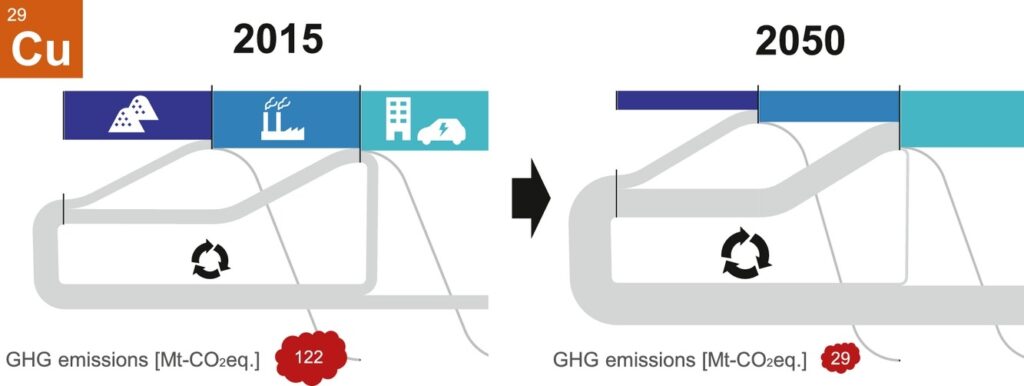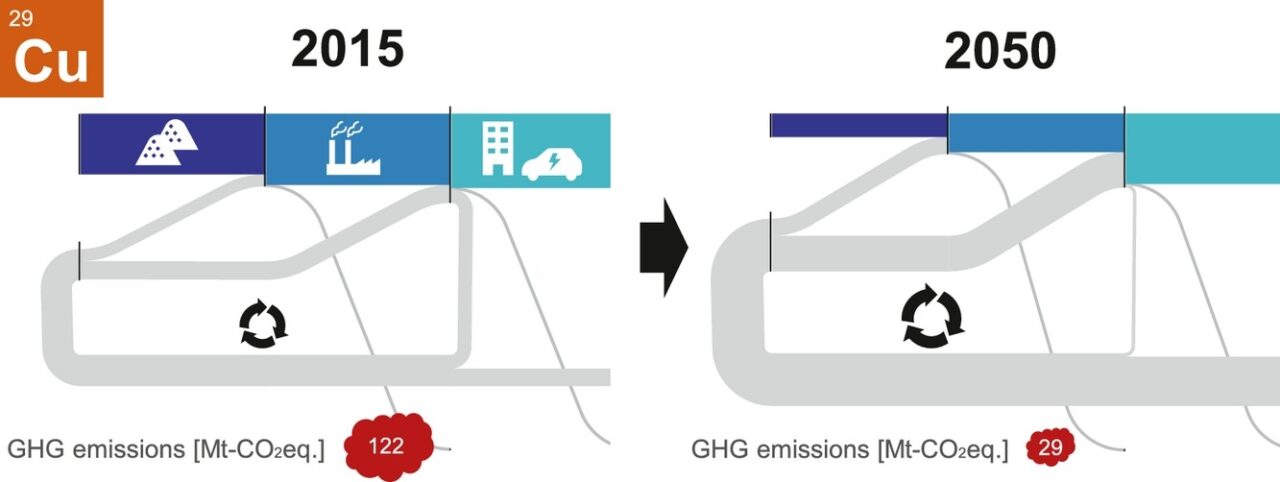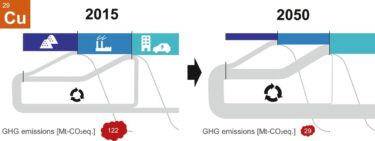
著者
Takuma Watari, Stephen Northey, Damien Giurco, Sho Hata, Ryosuke Yokoi, Keisuke Nansai, Kenichi Nakajima
掲載誌
Resources, Conservation and Recycling, Link
要旨
Moving towards a 1.5 °C world could fundamentally alter the future copper cycle through two key drivers: the implementation of decarbonization technologies and the imposition of an emissions budget on production activities. This study explores the impact of these drivers on the global copper cycle using a dynamic material flow analysis, coupled with an optimization technique. The results show that global final demand for copper could increase by a factor of 2.5 between 2015 and 2050, reaching 62 million metric tons, with approximately 4% of the increase coming from copper used in renewable energy-based power plants and 14% coming from electric vehicles. While there are sufficient resources to meet this growing demand, the greenhouse gas emissions of the copper cycle could account for approximately 2.7% of the total emissions budget by 2050, up from 0.3% today. Assessment of possible mitigation efforts by the copper industry shows that this can be halved, but will still be 35% short of the emissions budget target based on proportional responsibility, i.e., applying the same mitigation rate to all sectors. Rather, collective action is required by all stakeholders interacting with the copper cycle to bridge the mitigation gap, including through efforts to drive advanced sorting, higher fabrication yields, extended product lifetimes, and increased service efficiency of in-use copper stock.
補足
本論文は私が博士課程在籍時に実施した最後の研究をまとめたものです。お世話になった多くの先生方に改めて感謝申し上げます。


